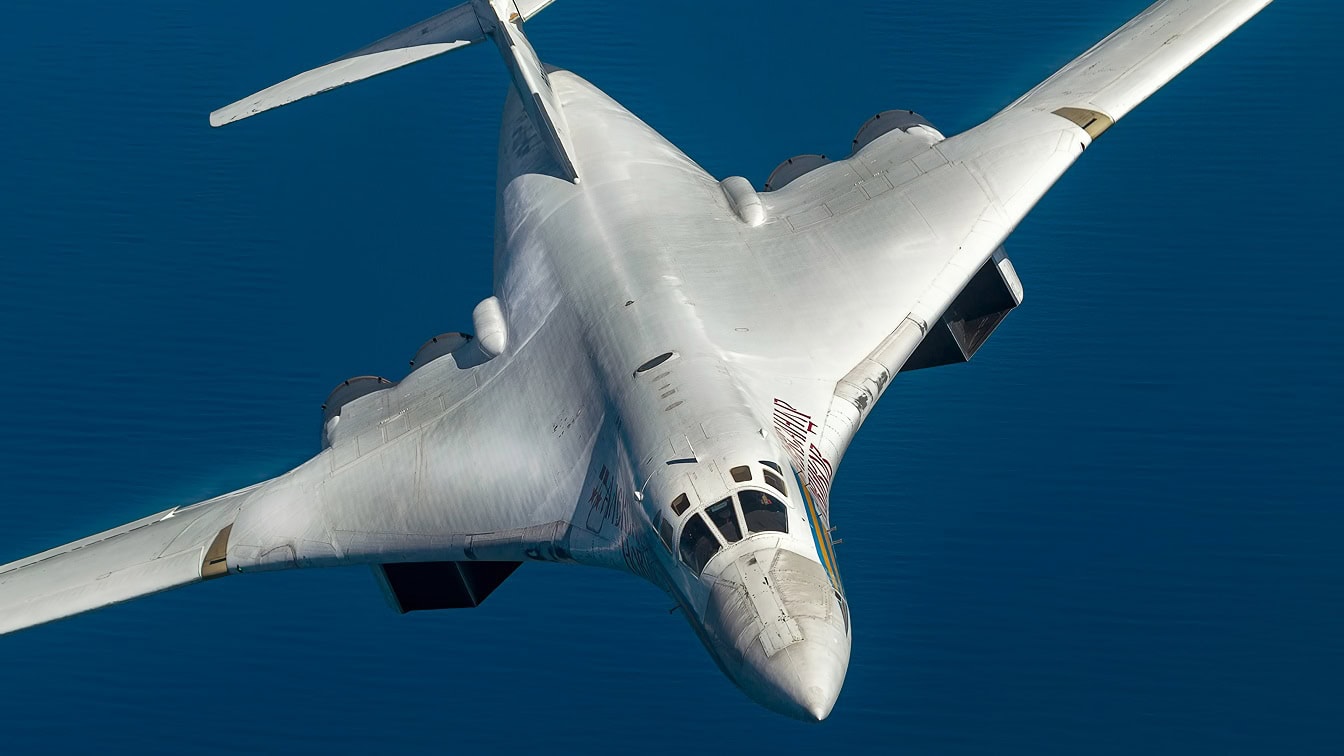Russia’s Kola Peninsula is located almost entirely within the Arctic Circle, and it is some 1,300 miles from Ukraine.
Still, this month, the Kremlin deployed 16 strategic bombers to the region – likely meant as a show of force following Finland’s entry into NATO.
Satellite images taken on May 7 showed a pair of Tu-160 and a dozen Tu-95 strategic bombers lineup at Olenya Air Base – each capable of carrying dual-use cruise missiles; conventional- or nuclear-armed.
Just 200 km (125 miles) from NATO member states Norway and Finland, the base was first detected by U.S. intelligence in 1957 and it is reported to have a runway length of 3,350 meters (11,000 feet). Olenya previously served as a forward deployment field for Long Range Aviation and was one of nine Arctic staging facilities for nuclear strikes on the United States. In recent years, the facility has been the home to the Russian Tupolev Tu-22M (NATO reporting name Blackfire) supersonic variable-sweep wing, long-range strategic and maritime strike bomber.
Images of the bombers at the facility were shared on social media.
Bomber Rotations
Last October, satellite images showed that seven Tupolev Tu-160 (NATO reporting name White Swan) and four Tupolev Tu-95 (NATO reporting name Bear) bombers had been deployed to the base.
Despite the distance from Ukraine, the bombers had reportedly been used in missile strikes on Ukrainian civil infrastructure last fall.
It would appear that a number of Russia’s Cold War-era bombers have once again rotated back to Olenya.
It could be due to intelligence reports that Ukrainian forces could target other Russian air bases. It was in December that a pair of Russian facilities had come under attack from drone strikes.
The bombers now deployed inside the Arctic Circle had previously been based at the Engels air base near the city of Saratov, one of the facilities to be hit by the Ukrainian drones.
Two Tu-95s were damaged in the drone attack.
The Cold War bombers first entered service more than 60 years ago, and it remains the only propeller-driven aircraft with swept wings to be built in large numbers.
Protecting the Kola Peninsula
Russia has gone to great lengths to ensure the defense of the Kola Peninsula, including the February 2020 deployment of a pair of Rezonans-N radars capable of spotting hypersonic targets.
According to reports from Russian state media, the Rezonans radars operate in the meter band and employ the principle of wave resonance, which allows the detection of aircraft that employ stealth technology as well as hypersonic targets flying at a speed of up to Mach 20.
The radar is also capable of detecting targets and issuing target acquisition on aerodynamic targets at a distance of 600 km (372 miles) and at a range of 1,200 km (745 miles) on ballistic targets, at an altitude of up to 100 km (62 miles).
Clearly, Moscow is determined to protect the Kola Peninsula.
MORE: The War in Ukraine Is About to Explode
MORE: Does Putin Have Cancer?
Author Experience and Expertise
A Senior Editor for 19FortyFive, Peter Suciu is a Michigan-based writer. He has contributed to more than four dozen magazines, newspapers, and websites with over 3,200 published pieces over a twenty-year career in journalism. He regularly writes about military hardware, firearms history, cybersecurity, politics, and international affairs. Peter is also a Contributing Writer for Forbes and Clearance Jobs. You can follow him on Twitter: @PeterSuciu.

